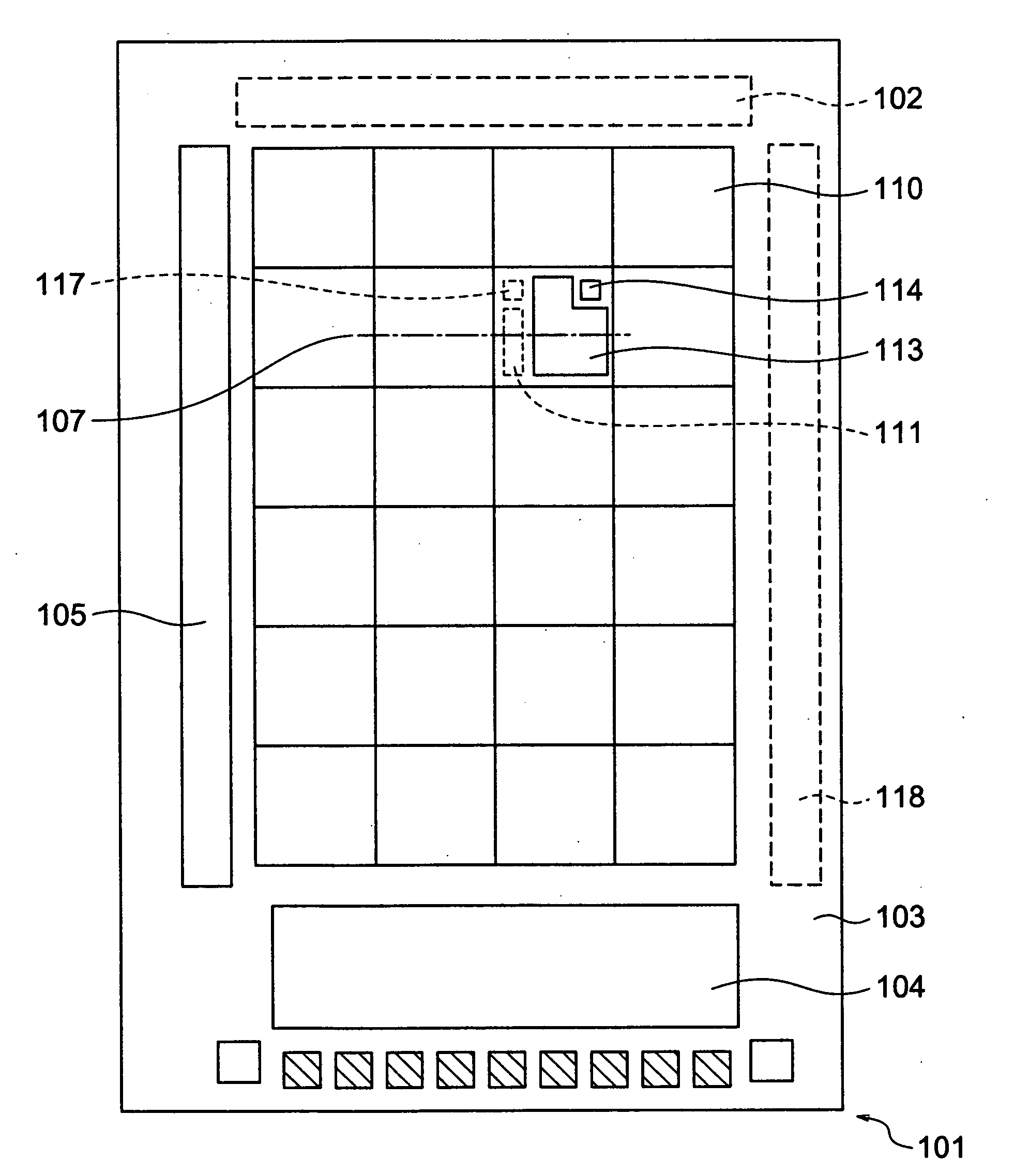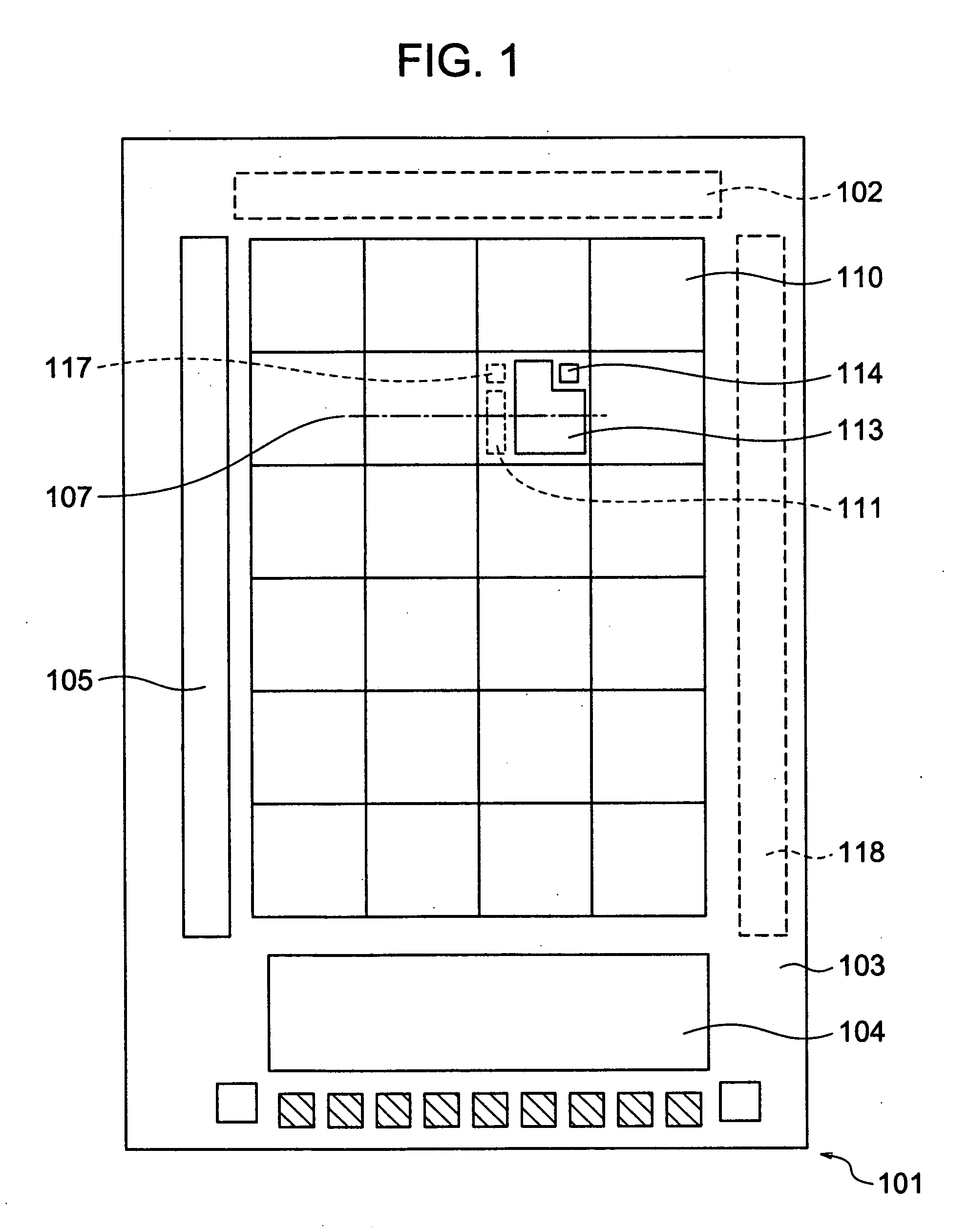Imaging device and apparatus installed with the same
a technology of authentication apparatus and imaging device, which is applied in the field of imaging device for authentication apparatus, can solve the problems of deteriorating display image quality, inability to increase detection sensitivity, and inability to fully detect light reflected from objects, so as to reduce the circuit size, and widen the imaging and radiation conditions
- Summary
- Abstract
- Description
- Claims
- Application Information
AI Technical Summary
Benefits of technology
Problems solved by technology
Method used
Image
Examples
first embodiment
[0071]This embodiment represents an imaging device with an imaging light source as an application of the invention, and has a structure in which a light-emitting layer is arranged on a detection element layer. The first embodiment of the invention is explained below with reference to FIGS. 1 to 5. FIG. 1 is a view showing a general configuration of an example of the imaging device according to this embodiment, FIG. 2 a circuit diagram for explaining the circuit configuration of the imaging device 101, FIG. 3 a sectional view of the imaging device taken at position 107 in FIG. 1, FIG. 4 a diagram for explaining the conditions to block the incidence of the direct light from the light source units in FIG. 3, and FIGS. 5 to 7 diagrams for explaining the method of fabricating the imaging device 101.
[0072]With reference to FIG. 1, this embodiment is explained briefly. The imaging device 101 comprises a light source system (dotted line) for radiating the imaging light, and an optical senso...
second embodiment
[0104]The imaging device 101 according to this embodiment is different from the first embodiment in that a collimator layer is used as a means for preventing the entrance of the direct light into each detection element 113 from the light source units 111. FIG. 8 is a sectional view for explaining the structure of an example of the imaging device according to this embodiment taken at position 107 in FIG. 1. FIG. 9 is a diagram for explaining the conditions for preventing the entrance of the direct light from the light source units 111 in FIG. 8.
[0105]In the imaging device 101 according to this embodiment, a collimator layer 136 is formed between the light source unit layer 132 with the light source units 111 formed on the glass substrate 124 and the detection element layer 133 with the detection elements 113 formed on the glass substrate 125, which are bonded to each other by transparent package adhesives 131, 134. The collimator layer 136 has a structure in which light-blocking plat...
third embodiment
[0113]The imaging device 101 according to this embodiment is different from the second embodiment in the signal reading method. FIG. 10 is a diagram showing a general configuration of an example of the imaging device according to this embodiment. FIG. 11 is a sectional view of the imaging device. FIG. 12 is a timing chart for explaining the timing at which the light is radiated and the signal is read.
[0114]In the imaging device 101 according to this embodiment, as shown in FIG. 10, the pixels 110 each having the light source unit 111 and the detection element 113 are arranged two-dimensionally. A given pixel arranged in column x and row y is referred to as the pixel 110-x-y. The light source unit 111 and the detection element 113 are also designated similarly.
[0115]The imaging device 101 according to this embodiment, like the structure of the second embodiment, uses the collimator layer 136. As shown in FIG. 11, however, only one light-blocking plate 143 is arranged for each pixel s...
PUM
 Login to View More
Login to View More Abstract
Description
Claims
Application Information
 Login to View More
Login to View More - R&D
- Intellectual Property
- Life Sciences
- Materials
- Tech Scout
- Unparalleled Data Quality
- Higher Quality Content
- 60% Fewer Hallucinations
Browse by: Latest US Patents, China's latest patents, Technical Efficacy Thesaurus, Application Domain, Technology Topic, Popular Technical Reports.
© 2025 PatSnap. All rights reserved.Legal|Privacy policy|Modern Slavery Act Transparency Statement|Sitemap|About US| Contact US: help@patsnap.com



